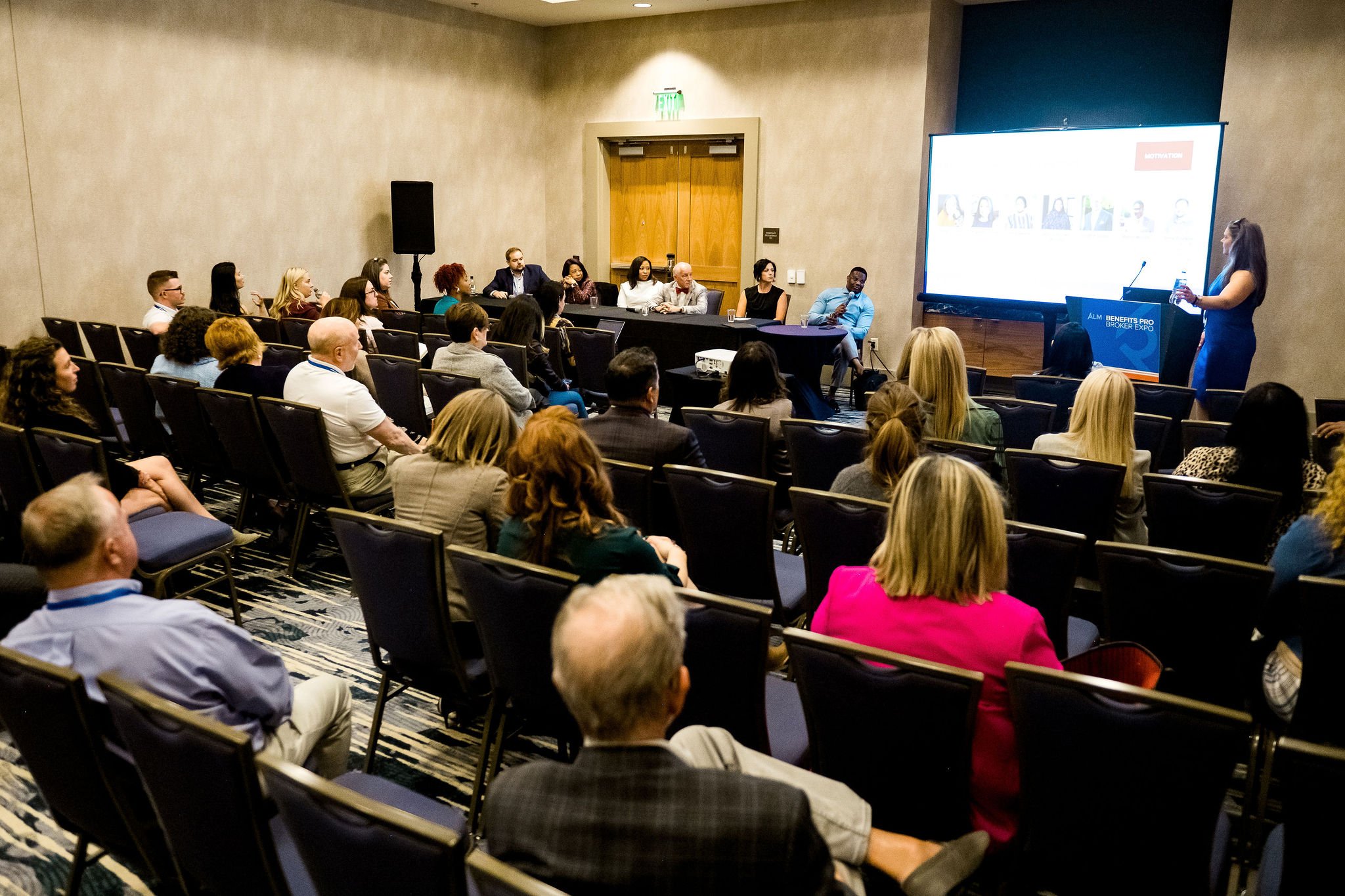 “Most employees aren't insurance professionals,” said Joi Tillman of Sun Life Financial. “They're focused on their own areas of expertise. It's up to us to provide a better, more seamless customer experience.” (Photo: Charles Garnar/ALM)
“Most employees aren't insurance professionals,” said Joi Tillman of Sun Life Financial. “They're focused on their own areas of expertise. It's up to us to provide a better, more seamless customer experience.” (Photo: Charles Garnar/ALM)
“We've made insurance products incredibly complex, and it doesn't have to be that way,” said Joi Tillman, vice president, Voluntary, for Sun Life Financial U.S., Tillman was speaking about “The Intersection and Evolution of Benefits and Technology: How can we best serve the customer?” at the 15th Annual BenefitsPRO Broker Expo in Miami, Florida. “Most employees aren't insurance professionals. They're focused on their own areas of expertise. It's up to us to provide a better, more seamless customer experience.”
Abigail Albright, product evangelist for Maxwell Health, Tillman's co-presenter, agreed that the whole experience should be greater than the sum of its parts. “We need to blur the lines between insurance and enrollment technology,” she said. “Better” comes from this, but it's not unique to insurance. Technology has injected itself into other industries to better connect the product to the customer.
Tillman asked the audience, “Are we really trying to make this better? Think about this from the insurance perspective. I'm being compared to something else they've shopped for online, not for the way they shopped for insurance.” It's generally unspoken, but clearly in the customer's mind is the shopping experience on websites like Amazon.
Albright pointed out that carriers need to have a better understanding of who needs to do what and why. “We have to integrate the insurance company and the technology company to provide a better customer experience for employees.”
Streamlined customer experience
She added that “Technology gives you insight into the consumer.” It allows you to increase the level of personalization, and companies are just starting to scratch the surface of what technology can do. The goal, she said, is to remove a lot of the headaches of managing insurance and create an integrated and streamlined experience.
“Look at other industries for the product purchase, distribution and consumption experience,” said Albright. “We don't buy things in one place then go to another place to use or consume them. There is the same shift here.” Employees expect no difference in the platform they use to help them understand their benefits, the platform where they enroll for benefits, and ultimately the facility through which they use those benefits going forward. Integration and consolidation can start to create that better more seamless experience.
Albright used cable providers as another example of using technology to improve the customer experience. Early on, there were only three basic bundles. As customer demands changed, cable providers went the other way and completely unbundled, allowing individuals to put together micro-bundles. Cable has shifted back to bundling, but the packages are tailored specifically for the customer. “We're now going to see that in employee benefits,” she said. The driving philosophy, Tillman said is, “Can we make this simpler? Can we create value in voluntary benefits based on outcomes for the employees who signed up for coverage?”
Albright explained that consumers don't assess the value of insurance on a piecemeal basis. What they're really looking for is financial security. The industry has to help them understand how the pieces combine to offer the best value.
“Don't fear the change in the process,” Tillman said. She sees lots of debate about how fast and how much to change as the insurance industry integrates more closely with the technology industry. “It's reasonable to expect us all to work more closely together. It's reasonable not to have to supply the same information several times to all partners. It should be seamless to the employees.”
Albright reminded the audience that brokers serve as the go-between for carriers and employers. They have to be on board and also be drivers of change. Carriers don't do that on their own.
Question time
Tillman and Albright addressed several questions from the audience.
The first question asked about defining the value proposition when the client demands vary, based on stages of life and economic status.
Tillman said that one size doesn't fit all, but the data can help with providing the right value to the right customer. Albright said that the industry needs technology to target and segment groups.
The next question asked how to deal with employer resistance to providing more individualized options to employees. Tillman acknowledged that “We don't always do a good enough job of explaining to the HR professional who is making the buying decision why a certain level of customization is a good idea and that it can reduce the burden on HR administrators. But for some employers, we have to admit that it's OK to limit choices.
Technology integration is coming, and by embracing the process, brokers can be valued advisers to their clients. And in the end, it's all about making benefits easier for the employer to administer and the employees to participate in.
Read more of our Expo coverage:
- Looking ahead to what's next at the 2019 BenefitsPRO Broker Expo
- Expo preview: Lessons of success and failure in creative plan design
- Expo preview: Canadian vs. American health care
© 2025 ALM Global, LLC, All Rights Reserved. Request academic re-use from www.copyright.com. All other uses, submit a request to [email protected]. For more information visit Asset & Logo Licensing.







